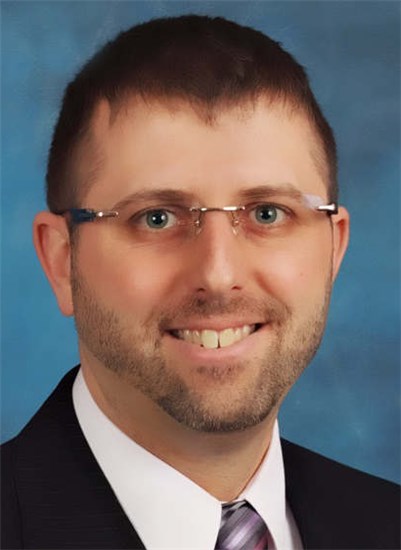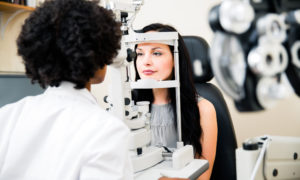By Dave Anderson, OD
March 18, 2015
SYNOPSIS
Electronic health records can streamline work flow and increase efficiency and productivity: two critical elements of practice profitability.
ACTION POINTS
IMPLEMENT. Set up the exam templates, scheduling modules and other customizable features prior to your EHR implementation date.
CUSTOMIZE EACH DOCTOR’S TEMPLATE. Each doctor within the practice can customize their own exam template, as perthe type of eyecare they provide.
CONNECT ALL AREAS OF PRACTICE. In a few clicks, find previous eyeglass orders, patients’ last OCT pics and other doctors’ findings.
Patient visits can get bottlenecked in many places–the reception desk, pre-testing, or even in the exam room, as the doctor fumbles looking up information. After implementing RevolutionEHR in my practice last year, those roadblocks to efficiency no longer occur.
RevolutionEHR allowed us to add two comprehensive exams per day and three progress checks or emergency visits, as well. The increase in patient volume not only had a huge impact on revenue, but the system also keeps us on time. No longer are we 30-40 minutes behind on a regular basis, and the end of the day matches with the expected time. With RevolutionEHR, we schedule more patients per day in a more efficient way, increasing revenue while also decreasing staff costs, with a huge decrease in overtime pay needed for running behind.
Adding patients and decreasing overtime has increased our net revenue by over 10 percent from the previous year. Our gross collections have increased by over 20 percent, allowing us to increase annual revenues by $220,000, and to add three full-time staff to better care for our patients.
Miamisburg Vision Care
Miamisburg, Ohio
Locations: 1
Doctors: 3
Support Staff: 16
Annual Exams: 6,000
Annual Revenues: $2.2 million
Project ROI
We spend about 40 percent less on RevolutionEHR than on our previous EHR/practice management software. We have more features, such as Direct e-mail capability to communicate with other doctors using EHR software and integrated electronic prescribing.
Using a cloud-based EHR has made our system more reliable as we no longer need to hassle with data back-ups, upgrading software or replacing server hardware ourselves. It’s way faster too. The average page takes less than three seconds to load, while our old system, which was housed on our server, took approximately 30 seconds to load. In other words, we are saving money while benefiting from a faster, more reliable product.
Map Out How Long to Reach Efficiencies
We trained our staff on RevolutionEHR using videos and webinars. This allowed us to train during work hours without changing patient flow or decreasing revenue. Over the course of approximately two months, our office staff and doctors trained throughout their regular schedule. We set up the exam templates, scheduling modules and other customizable features prior to our “go live” date.
During the first two days on RevolutionEHR, all of our doctors decreased their work-load and number of encounters by about 30 percent, but on the third day, we were back at full capacity. The only hiccup in the entire transition was that our optical staff had previously never recorded an order electronically as part of a patient record. There was a learning curve, but within a month, our optical staff loved some of the new features, and enjoyed not having to re-enter the patient’s name, phone number, glasses Rx and other data when recording orders.
Our billing staff noticed efficiencies almost immediately. By having fee schedules set up directly and discount flexibility in place, they were able to quickly improve the efficiency of the patient check-out process. When billing staff would reconcile EOBs and deposits, the ability to batch bill and post saved significant time. As our billing manager for 39 years put it, “this is almost as easy as the days of taking cash payments.”
Related ROB Articles
Patient EHR Portals: Strategies to Meet Mandated Patient Use Levels
The ROB Electronic Health Records Resource
EHR: Your Patient Education Tool
Related ROB Videos
Meaningful Use: Implement Stages 1-3
Use EHR to Improve Patient Outcomes
Optimize Easy Information Retrieval
Added efficiencies occur in many areas with EHR technology, from appointment scheduling all the way through patient check out. Efficiencies occur with easily searchable schedules and demographic data collection that automatically populates in the online forms.
RevolutionEHR has a great schedule search, which allows customization of the patient to the point of even automatically adding the patient’s previously stated preferences into the search area. Whether a patient prefers Monday evenings or Saturday appointments with a specific time or simply the first available, virtually any scheduling scenario can be searched. One of the greatest efficiencies realized with scheduling is when adding new staff. It is difficult for new staff members to fully understand all the various exam types, including emergency visits, contact lens follow-ups, progress checks and comprehensive exams. Now, when a new employee joins our staff, the scheduling template and the search option makes it simple to schedule a patient at the best time for the kind of eyecare the patient needs.
Soon we will add the scheduling feature to the patient portal to allow our patients to schedule their own appointments and fill out questionnaires at their convenience. This will free up our staff to better concentrate on patients who are in the office that day.
 Customize Exam Flow for Each Doctor
Customize Exam Flow for Each Doctor
There are three doctors in our practice, each with a different emphasis of care. I conduct many disease-related exams, from glaucoma to macular degeneration and dry eye. This type of encounter is much different than a low vision evaluation. We customized exam flow templates that fit each of these encounters, and we maximized our scheduling template to put the exam types in the time slots that best suit our patients’ needs.
Prior to RevolutionEHR, we essentially had a blank canvas for our schedule. We put patients wherever the patient wanted, without regard to the type of visit. This could mean several complex exams would occur in a row, and the doctor would inevitably run behind. Now that we are able to customize the exam flow template for each doctor, and define when to schedule certain exam types, this is no longer a problem.
The ability to customize exam templates so they auto-populate decreases clicks and scrolling, significantly reducing the time needed to chart the exam data.
Most EHRs I have encountered, especially the old system we used, force a doctor to use the exam form the EHR vendor believes will work for all doctors. This is akin to choosing one doctor out of 40,000 and using the paper chart they use in their office. This simply doesn’t work as every doctor has different equipment, different exam flows, different patient needs and different services they provide. I love the ability to set up the templates to best match the work flow in our practice.
Better yet: when we add equipment or change exam flow, we can change the chart templates on the fly!
Connect All Areas of the Practice
RevolutionEHR is at the heart of our daily operations – connecting all the areas of our practice. For instance, with a few clicks I can check when the last pair of glasses were ordered, which contact lens company was chosen to deliver the contacts to my patient, if there is an account balance for a patient, and then quickly refill a glaucoma medication.
From the integration of images from our OCT to the inclusion of data from the pre-test area, desktops offer the best speed and reliability, but I also carry a small laptop with a touch screen. This allows me to see who my next patient is, complete charts, fax letters and send prescriptions while I walk from patient to patient.
Streamline Co-Management Communication
I see many patients who require communication with a primary physician or other specialist. The ability to formulate a letter in just a few clicks, which can then be faxed, or even e-mailed via the secure Direct e-mail feature, allows me to save 15-20 minutes a day.
I look forward to greater interaction with other doctors who use EHRs. In a few cases so far we have been able to integrate patient information such as medications, allergies and medical history from other doctors into our patient record. This electronic communication between doctors’ offices will soon become more widespread, and the need to have patients fill out a history form will soon be obsolete.
Greater efficiency, productivity, and ability to provide a better office experience for patients, makes my EHR an essential tool for practice success.
Dave Anderson, OD, is a partner withMiamisburg Vision Care in Miamisburg, Ohio. To contact: doca@burgvision.com




























